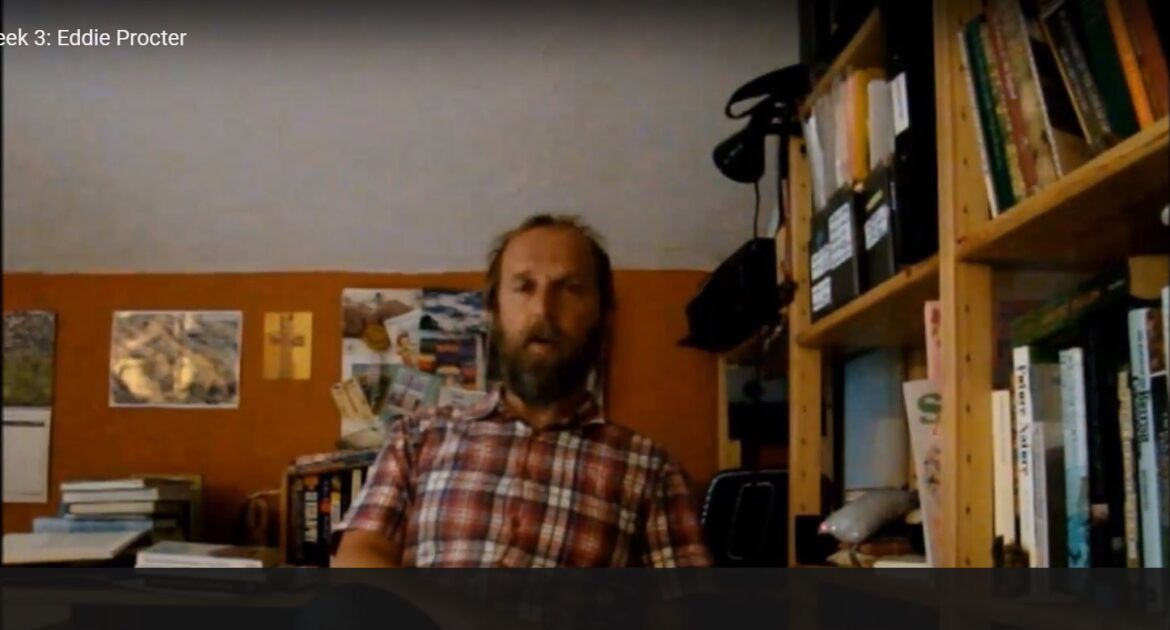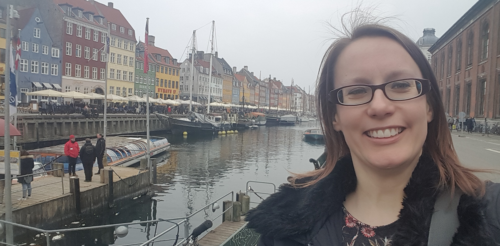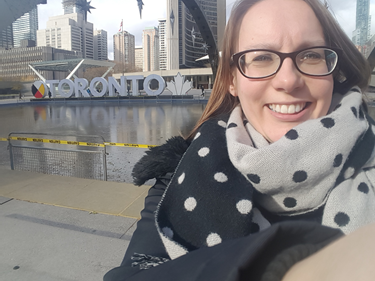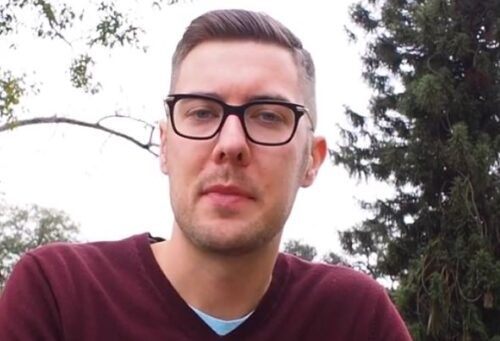In this video, Eddie talks about the importance of having regular contact with his supervisor and shows how he organises his time.
Follow the vlogging series as we invite PhD students at various stages of their PhD and different locations to film themselves over 4 weeks and share their videos with you. Our vlogs cover everything from starting a PhD, moving abroad to do a PhD, finding funding opportunities to viva preparation and finding your first academic job.
Ready to start your PhD journey? Search for PhDs here
PhD Vlog Week 3 Eddie Procter
PhD: Landscape Archaeology
Location: Exeter
A snapshot of my PhD journey.
Hello. Today I’m going to talk a bit about organisation and planning of your PhD research which might not sound like the most exciting subject but actually is really fundamentally important in terms of underpinning your research and your progress over your years, and making sure that you keep on track and it doesn’t become too stressful.
So what I’m going to be talking about really is the approach that I use to organise my work, it might not necessarily be all something that you will want to do but hopefully there’ll be useful things in there, I think the main thing is to find an approach that works for you and to have a plan as to how you organise your work.
So a few fundamental things firstly; I think the first thing to say is the importance of having good regular contact with your supervisor – whether that’s face to face or phone or by email. I have a monthly meeting with my supervisor and that’s really useful for me to report progress, for him to provide advice and ideas, but also to make sure that I’m generally on track. It’s also important to have an outline timetable and plan for your three years so that you know in general terms what you’re going to be doing when and you can make sure that you’re keeping on track, and within that you would be best advised to kind of divide that into bite-sized chunks so that you kind of look for instance at what you’re going to be doing over the next two or three months and kind of focus on that but with an eye to the longer-term plan, and within that also you would probably want to have some kind of chapter plan so that you have an idea – from the earliest point really – as to what your thesis is going to look like, although that will change and adapt as you go along, it’s important to have that in place.
I think one of the things that I’ve learnt is to write… start writing up as you’re doing along as well. Don’t think, “Oh I’ll just leave the writing up of the thesis right up until the end.” Best to write it up as you go along and then adapt and change it as you need to as you go along, as it’s a good idea to have a sort of general actions list of things that you need to do – especially at the start of the PhD, there are loads of different things that you need to get organised with, so having some kind of actions list or checklist is a good idea and generally just kind of setting up systems for how you’re going to organise the huge massive data and thoughts and ideas and references that you will come across because it’s an enormous amount of data and you need to be really organised in how you manage that, which I’ll talk about in a bit more detail, and also as you are starting to write things up it’s important to develop your own kind of consistent house style of how you’re going to present the information in the final thesis, and again you might want to record that so that you can refer to it as you go along. So there’s a few general thoughts, I’m just going to talk about some of those things in a bit more detail but before I do and so that you’re not just listening to me droning on, there’s a short interlude now with a brief film from some of my fieldwork.
And here I’m in a field called Ugley Field or Bugley Field, the name of which probably derives from the old Welsh word for shepherd – Bugail – and what I’m looking at here is a sort of slight rise in the ground and then a flat area on which may have been a building platform on which the medieval priory had its main sheep cots or sheepfolds. In the background there, there’s a line of trees going upwards and in there, there’s an old Holloway which may have been the old track up to the summer pasture up on the hillside there. As you can see, it’s a very large field, it’s got sheep in it now, and then down by the river which you can just see the bridge there – Bugle Bridge – there’s actually some traces of some old stonework in a depression down to the river which may have been some kind of sheep dip. So I’m just exploring really.
Okay, so now I’m going to talk in a bit more detail about some of the things that I do to organise my work. The first thing is that I use Google Calendar – obviously there’s other software that you can use that does a similar thing, but it’s essentially an online calendar or timetable that you can use and I tend to have a sort of rolling three month plan really, so this is my schedule for next week. So I’ve basically just got something in for every day in terms of what I’m going to be doing that day – not in massive detail but just generally – and obviously you can change and adapt that as you need to. But I find it useful to do that and also to have a key thing, key dates and key milestones in the future as well and Google Calendar also has a thing where you can put in sort of one-off daily tasks as well which is quite useful and it can also send you reminders about thing as well. So I just find that a useful way of kind of organising my work without getting too sort of bogged down in it but it’s really useful. In terms of kind of general reading and note-taking, in the past I’ve probably been a bit more haphazard about that and if I’m reading a journal article or a book, then I may sort of underline a few bits and pieces, have loads of books around me if I was writing an essay but I soon realised that doing a PhD, just the sheer number of sources that you’re using, you need a more systematic approach, otherwise you’ll just get completely lost. So for each bit of work that I’m doing, what I tend to do is have just a word document that I use to list all of my sources and that’s where I put my notes. So for each book or journal that I’m looking at, I’ll just note down the details of the book when I’ve taken notes and just have my notes in there so that everything’s together, a single document for that section of the PhD. And when it comes to writing up, then that’s what I use as my notes for the actual draft chapter that I’m working on. What it means is that I probably take many more sort of notes that I will actually use in the thesis but that’s just the way it works – well for me! Alongside that, I use a software called EndNote which is just a referencing software.
So whenever I use a new reference source, then I put the details into that software and just make a note that I’ve done that on this list so that I know what I’ve got in my reference list and I mean to date, I’ve got about over 300 references in there and that will just go up and up and up. I think just generally you need to just have a thing about how you’re going to organise your materials generally. Obviously most people have a lot of stuff on their computer, so I’ve just I spent quite a bit of time sort of thinking about how I wanted to organise my files, so I’ve got lots of different sub-files for different elements of my research. So there’s a subfile with my draft thesis chapters in there. I’ve got a subfile with my case study information in there. I’ve got a subfile with kind of information sources, etc. etc. and obviously it’s vitally important to have a back-up version of that as well so that in the event that something goes wrong with where you’ve got that stored that you’ve got it backed up. So I just have a note to myself in Google Calendar to back-up every Friday otherwise it would be a bit of a disaster to lose things. I think generally it’s just a good idea within your sort of schedule to have regular reviews of kind of progress, how you think it’s going, whether you need to make any changes in your schedule because inevitably things will change. And I think in terms of fieldwork if you’re doing fieldwork or case studies or archive visits which I’m doing, I think then you need almost a sort of mini-plan for how that’s going to work. So I’ve just got an excel file that I use for my case studies, for instance, where I can just note down all the different kind of things that I need to do in the case study, the research activity, any fieldwork that I’m going to be doing it doing sort of rough dates when I’m going to be doing that. Again, just so that I can sort of keep stock of how I’m progressing. Okay, so there’s just a few thoughts and ideas about how I organise my PhD research and I’m going to finish with another short film from my fieldwork.
So I’m near the top of a steep hillside in the Vale of Ewyas in the Black Mountains on a very hot day.
Looking ahead here to this ravine that you can see going up to the skyline, this is a modern boundary between Monmouthshire and Powys to the left. It’s an old county boundary between Monmouthshire and Breconshire. Before that, it was a boundary between Norman Lordships in this area in the early medieval period and before that between Welsh kingdoms and it’s kind of an indication… I’ll just film down the steep slope here. So the border here is following this ravine that you can see in the trees which is obviously a natural feature, but above here on the more open moor side, it just follows a fairly arbitrary straight line, essentially a line on a map. Below us it drops down steeply to the River Honddu down in the valley bottom and follows that and then follows another deep ravine that you can just see in the centre of the picture here which is the sort of fairly thick line of trees going up to a natural hollow at the end of the… at the top of the field and then again it follows an arbitrary line up that very steep hollow
up to the ridge and then it follows the ridgeline all the way down to the south of the valley. So yeah, just an indication that boundaries kind of follow a mix of natural features but also sometimes just arbitrary straight lines – even those that have been with us for centuries if not millennia. Right, I’m going to go back to walking to the top of this hill now!





Leave a Reply